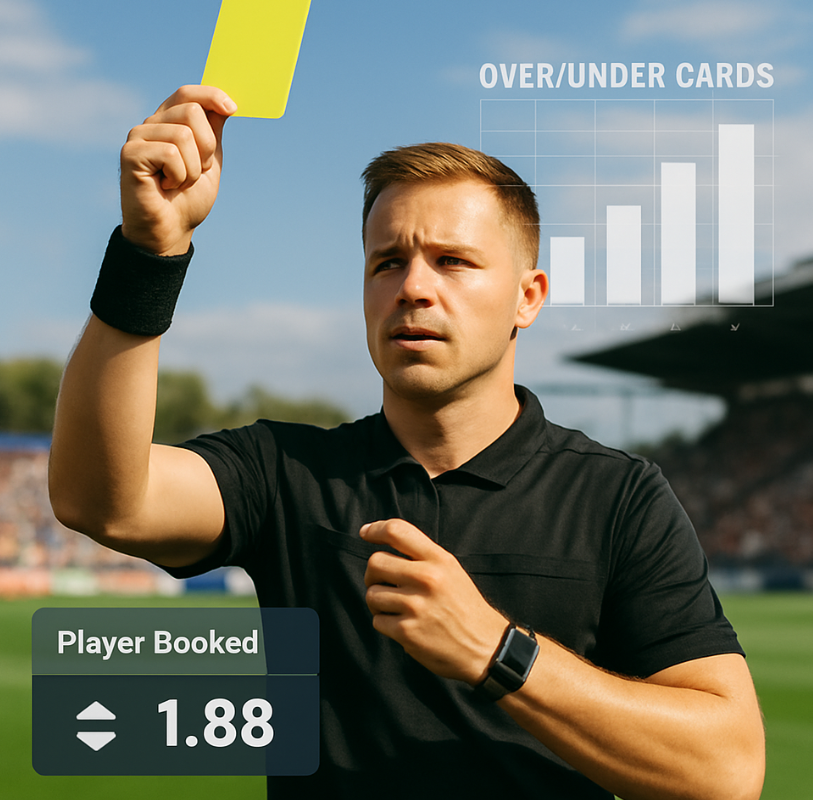In the world of football betting, everyone knows about wagering on winners, goals, or corners. But there’s another market quietly offering real opportunities to those willing to dig deeper: cards betting. Yellow and red cards might seem like random elements of chaos during a match — but for the smart bettor, they represent a highly strategic betting niche.
If you’re ready to understand and master the world of cards Over/Under betting, it all starts with reliable information. A great place to start is https://ratingbet.com/football/cards-over-under/ where you can find up-to-date stats, averages, and trends for smarter betting decisions.
Now, let’s break down everything you need to know to get an edge in football cards markets.
What Are Cards Over/Under Bets?
Cards Over/Under betting is simple in concept: bookmakers set a predicted number of cards (yellow + red) for a match, and you bet whether the actual number will be higher (Over) or lower (Under) than that line.
Example:
- Over 4.5 cards = You win if 5 or more cards are shown.
- Under 3.5 cards = You win if 3 or fewer cards are shown.
However, while the bet might sound straightforward, predicting card totals requires a deeper understanding of the match context, referee tendencies, and team styles.

Factors That Influence Card Totals
Before placing a bet on cards, smart bettors analyze a range of factors. Here’s a checklist:
✅ Referee Tendencies: Some referees are stricter than others — study their averages.
✅ Team Styles: Aggressive or defensively weak teams draw more cards.
✅ Match Importance: Finals, derbies, and relegation battles typically produce more cards.
✅ Historical Data: Past meetings between teams often show consistent booking patterns.
✅ Game State: Losing teams tend to foul more late in games.
Ignoring these factors is like flipping a coin. Integrating them into your analysis gives you a much better shot at consistent success.
Table: Average Cards per Match by Top European Leagues
| League | Avg. Yellow Cards | Avg. Red Cards |
|---|---|---|
| La Liga (Spain) | 4.8 | 0.3 |
| Serie A (Italy) | 4.5 | 0.2 |
| Ligue 1 (France) | 4.3 | 0.2 |
| Premier League (England) | 3.4 | 0.1 |
| Bundesliga (Germany) | 3.2 | 0.1 |
As you can see, betting Over on card totals makes more sense in Spain or Italy than in Germany or England, where referees are often more lenient.
How Referees Change the Game
One of the most underestimated factors is the referee himself. Some officials average over 5 yellow cards per game, while others barely hand out 2-3.
Knowing the assigned referee and studying his style is essential. Some referees:
- Protect players aggressively with early bookings.
- Allow physical battles to flow with fewer interruptions.
- React emotionally to tense moments, dramatically changing the card count.
Table: Top Card-Happy Referees (Average Cards per Match)
| Referee | League | Avg. Cards per Match |
|---|---|---|
| Antonio Mateu Lahoz | La Liga | 6.1 |
| Jesús Gil Manzano | La Liga | 5.5 |
| Michael Oliver | Premier League | 3.8 |
| Daniele Orsato | Serie A | 5.0 |
| François Letexier | Ligue 1 | 5.2 |
If you see Lahoz or Manzano officiating a heated match, it’s often wise to lean toward betting Over on cards.
Practical Tips for Successful Cards Betting
Even with the best data, discipline is key. Here are some actionable tips:
- Don’t bet on emotions: High-profile games can be unpredictable. Stay data-driven.
- Monitor late lineup news: Missing key defenders may affect card potential.
- Be wary of friendly matches: Cards are less common when nothing is at stake.
- Use multiple sources: Cross-reference card stats from reliable platforms like RatingBet.
Consistency in your analysis will pay off over the long run.
Betting on football cards offers one of the most exciting hidden markets — a world where deep preparation and smart analysis truly shine. With the right tools, a keen eye on the referee, and an understanding of team dynamics, bettors can consistently outthink bookmakers in this niche.
If you’re serious about improving your betting game, mastering cards Over/Under markets is a fantastic place to start.
And remember: it’s not just about watching the ball — it’s about reading everything happening around it.
